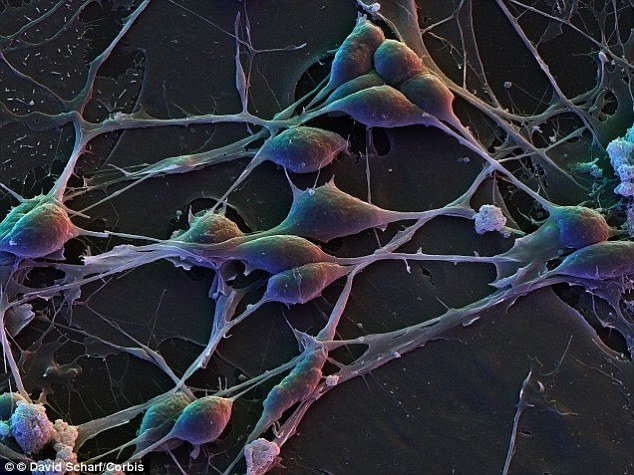
Using a specialised microscope to tweak activity of brain circuits, they were able to control the behaviour of mice, leading to hopes that we could one day selectively stimulate cells in the brain, like hitting keys on a piano.
While mind control may seem like the stuff of dystopian sci-fi nightmares, the team said the findings could provide insight how the different regions of the brain communicate with one another and even shed new light on brain disorders.
The brain is an incredibly complex organ, made up of interconnected clusters of cells which form neural circuits for different functions.
Cells within circuits may fire in response to a given task, but deciphering which combination of on-off signals within the circuits achieves the desired effect has remained unclear.
In experiments with mice, a team at the University of California, Berkeley, combined cutting edge neurobiology techniques to develop a microscope which is able to zoom in on a relatively small patch of thousands of brain cells and alter their activity using laser light. By targeting an area of just a few thousand cells with the tool, they were able to change the electrical signals passed between them, so altering the activity of the animal's brain circuitry.
The findings were presented at the Annual Meeting of Experimental Biology in San Diego.
'With this new microscope, we believe we will soon be able to treat the brain as the keyboard of a piano, so to speak, and write in a sequence of activity that is needed to understand or correct brain function,' said Dr Hillel Adesnik, a neurobiologist at UCB, who led the research.
'After more refinements, this instrument may be able to function as a sort of Rosetta Stone to help us crack the neural code.'
According to Dr Adesnik, the researchers hope their approach will help to better understand how the brain's cellular machinery works and the 'language' being used by the cells to communicate.
He explained: 'We wanted to develop a technology that can offer a general approach to understand the basic syntax of neural signals, so that we can begin to understand what a given brain circuit is doing and perhaps what's gone wrong with that in the case of a disease.'
Mice were prepped by fitting glass windows into their skulls so the light could penetrate into their brains. The brain cells were also genetically modified to make them responsive to light, using a technique called optogenetics. Once in position on the animal's head, the tool shines two beams of infrared lasers through one of these windows in order to create a 3D holographic pattern within the brain.
The light-responsive brain cells then alter their electrical signals to any pattern the team choose, using the holographic pattern as a template. 'We're adapting holographic display technology, optogenetics and sensory biology and behaviour into one complete system that allows an all-optical approach to image and manipulate the nervous system,' said Adesnik. We've essentially put a lot of disparate existing pieces together to achieve something nobody had yet achieved,' explained Dr Adesnik.
Initial tests in live mice used the tool to record the activity of cells during small movements, such as a mouse moving its whiskers. The activity was mapped to a hologram, which could be used as a template to trigger the same network of neurons to fire.
But the group is also developing the technology to trick mice into seeing things that aren't there. In animals trained to push a lever in response to seeing a shape, they are using the approach to stimulate brain cells so the animal will think it has seen the shape, which could eventually be applied to memories.



Comment: Wireless mind control?: New technique allows direct stimulation of neurons